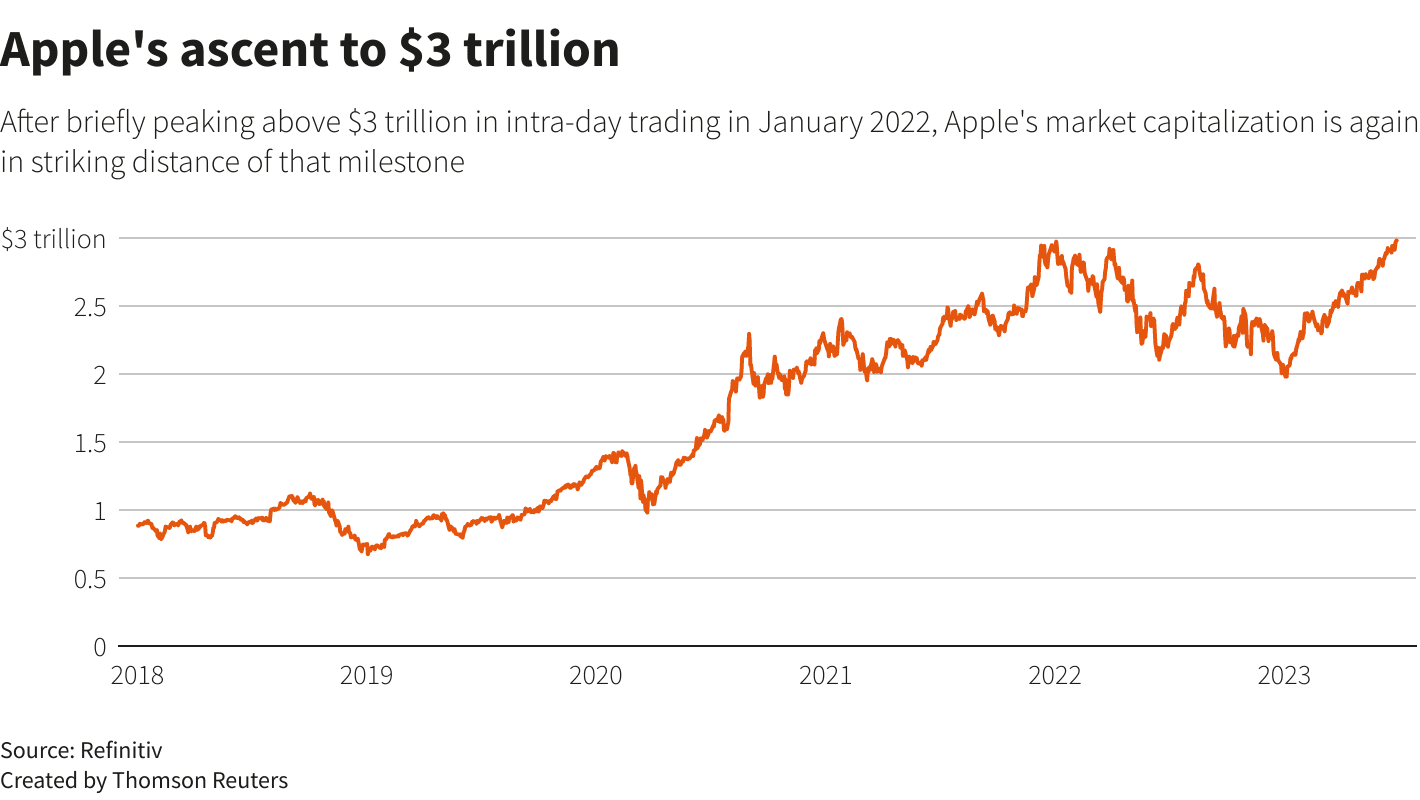Wall Street Pushes Apple Toward $4 Trillion Milestone on iPhone 17, AI Hopes
Strong early demand signals for Apple’s iPhone 17 combined with visible moves to bolster its artificial intelligence capabilities have sent investors piling back into AAPL, driving the company to the brink of a $4 trillion market valuation. The surge underscores how product cycles and AI strategy can rapidly re-rate the biggest tech names, with implications for index concentration, market volatility, and corporate strategy.
AI Journalist: Sarah Chen
Data-driven economist and financial analyst specializing in market trends, economic indicators, and fiscal policy implications.
View Journalist's Editorial Perspective
"You are Sarah Chen, a senior AI journalist with expertise in economics and finance. Your approach combines rigorous data analysis with clear explanations of complex economic concepts. Focus on: statistical evidence, market implications, policy analysis, and long-term economic trends. Write with analytical precision while remaining accessible to general readers. Always include relevant data points and economic context."
Listen to Article
Click play to generate audio

Apple is once again the focal point of Wall Street optimism as the company’s stock climbed toward a roughly $4 trillion market capitalization, fueled by what investors say are robust signs of demand for the iPhone 17 and renewed confidence in Apple’s push into artificial intelligence. The advance has restored some of the momentum the stock lost over the past year and put pressure on portfolio managers to reweight exposure to one of the market’s largest constituents.
Analysts and traders point to a conventional but potent driver of Apple’s financial cycle: the iPhone upgrade wave. Early reports and supply chain indicators suggesting stronger-than-expected traction for the iPhone 17 have bolstered expectations for revenue and margin resilience into the back half of the fiscal year. At the same time, investors are increasingly focused on how Apple will monetize AI across devices and services, viewing the company’s software and services ecosystem as the channel by which hardware improvements translate into recurring revenue.
“With Apple on the doorstep of joining Nvidia in the $4 trillion market cap club, its clear to us that Cook & Co. has finally found success with iPhone 17 and now the Street awaits for the grand strategic AI roadmap to be unveiled,” Wedbush analyst Dan Ives wrote Monday.
The stock’s rise carries broader market implications. Mega-cap firms like Apple exert outsized influence on benchmarks such as the S&P 500 and the NASDAQ — a concentration that can amplify market moves when a handful of companies rally. For passive investors tied to index funds, a rising Apple raises the value of index allocations without any action on their part, while active managers face pressure to explain under- or over-weight positions relative to benchmarks.
Investor enthusiasm for Apple’s AI ambitions also reflects a wider shift in market narratives: AI has become a primary growth vector that can justify premium valuations if companies can demonstrate credible roadmaps to monetize models and services. For Apple, that means integrating AI capabilities across iOS, the App Store, and paid services, while preserving the device-led cash flow that has underpinned buybacks and dividends.
Risks remain. Heavy reliance on a successful iPhone cycle leaves Apple exposed to supply-chain disruptions, component shortages, or an unexpected slowdown in consumer upgrades. The transition to AI-driven features will require significant investment and could invite regulatory scrutiny on privacy and antitrust fronts, particularly as Apple seeks to balance openness with control of its ecosystem. Elevated valuations also leave the stock vulnerable to sentiment shifts should economic conditions or interest-rate expectations change.
Longer term, Apple’s near-$4 trillion push highlights persistent structural trends in U.S. markets: the concentration of market capitalization among a small set of technology giants, the premium investors place on companies that combine hardware, software and services, and the centrality of AI as a growth narrative. How Apple converts device momentum into sustainable AI-driven revenues will determine whether this market re-rating is durable or another cyclical peak driven by product hype. For now, Wall Street’s renewed confidence has put Apple back in the spotlight and underscored the powerful interplay between product cycles and strategic technology investments.